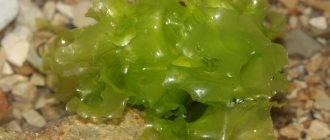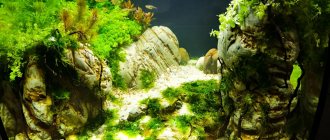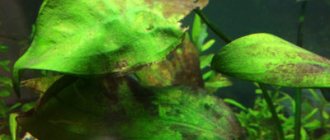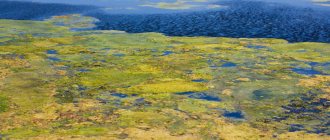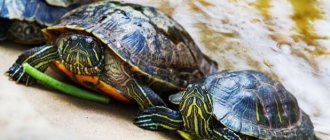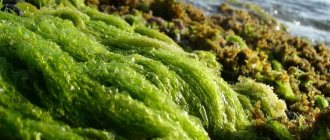Diatoms are an important part of marine and freshwater plankton. The microscopic organism of diatoms is a single cell covered with a silicon shell. Colonial forms of this group of algae are found; they often form a gray, green-brown or brown gel-like coating on various surfaces. Diatoms play a huge role in ecosystems, even as small as a room aquarium. Algae create a significant amount of biomass, which has already attracted the attention of producers of organic substances and fighters for clean water bodies.
Division Diatoms
The international systematic name for the group of diatoms is Bacillariophyceae. This vast group includes - according to various sources - from 20,000 to 200,000 species living in salt and fresh water, even under the ice cover of the Arctic and Antarctic. Diatoms are predominantly planktonic organisms, which means they lack organs for active movement in water. The smallest representatives of this group, which are capable of moving independently, have been studied; for this they have numerous adaptations.
The surface of the solid valves of unicellular and colonial organisms is covered with a thin layer of organic compounds. There is a pattern of ribs and strokes by which diatoms can be distinguished. The photo of one of these microscopic creatures below gives an idea of the shape of the cell and the structure of its surface. The color of diatoms varies from yellow to brown, which is due to the presence of a mixture of chlorophylls, xanthophylls and carotenes - in total there are about 9 different pigments.
Reasons for appearance
The causes of brown algae are as follows:
- nitrogen cycle disorders;
- excess nitrogen compounds in water;
- excessive silicate content in the aquarium;
- pH and hardness values are too high;
- excessive accumulation of organic matter;
- daylight hours are too short;
- overpopulation of the aquarium and overfeeding of fish;
- a small number of aquarium plants;
- low water temperatures;
- poor filtration;
- excessive fertilization and excess phosphates in water;
- lack of water changes and regular cleaning;
- disturbance of biobalance (for example, after treatment of fish with medications, especially those containing iodine and sodium).
Also, brown algae can appear after a total cleaning of the aquarium: changing a large volume of water, siphoning the soil and washing the filter, performed simultaneously.
External structure of diatoms
One of the main distinguishing characteristics of diatoms is their hard cell membrane, formed by silicon dioxide with admixtures of aluminum, magnesium, iron, and organic compounds. The cover consists of two halves of different sizes, which close like a casket or box. One valve is larger than the other, both have a slightly convex or flat shape. The large half of the shell covers the small one, like a lid. There are additional structures - septa. They divide the cell into separate chambers.
Numerous signs of internal and external structure distinguish diatoms. Photos under a microscope allow you to more carefully study the features of the cell membrane and internal contents. The outer wall is not uniform throughout its entire length; it is penetrated by many holes through which the exchange of substances with the environment occurs. There are projections on the silica shell that help colonial forms create associations and resist waves and currents.
Morphology and anatomy
Diatoms '(Diatomophyta)', or Bacillaria '(Bacillariophyta)' - a department (type) of algae, numbering about 20 thousand species. These are single-celled organisms, free-floating or attached to the substrate. Sometimes they form thread-like or chain-like colonies. The shape of the colonies can be round, ellipsoidal, barrel-shaped, or prismatic. Cells D. v. have a hard silica shell, consisting of two halves, the so-called valves, entering one into the other (1 and 5, Fig. 1). Many D. v. have bilateral symmetry and the ability to move along the substrate with the help of mucus secreted from the suture (4, 7, 8, Fig. 1). A suture is a gap in the shell flap. Diatoms with a radial structure do not have such a seam.
Picture 1
Diatom cell structure
The cytoplasm forms a thin wall layer; there is a kind of bridge in which one diploid nucleus with nucleoli (1–8 pieces) is located. Almost the entire internal cellular space is occupied by a vacuole. Chromatophores are mainly located along the walls. These are small but numerous disks or larger plates. Heterotrophic diatoms do not contain pigments. The chromatophores of autotrophic diatoms contain colored plastids:
- a- and c-chlorophylls (green);
- β- and ε-carotenes (orange);
- xanthophylls (diadinoxanthin, diatoxanthin fucoxanthin and other yellow pigments).
Photosynthesis reactions in diatom cells lead to the formation of lipids, rather than carbohydrates, as in most land plants. In addition to the fat molecules necessary for life, the cells contain grains of volutin and chrysolaminarin as inclusions and reserve substances.
general information
Diatoms were discovered in the 18th century, when Leeuwenhoek microscopes and new magnifying glasses began to be used for various research projects. This group of unicellular algae has received several scientific names, namely: bacillariophyta, silica (Kieselalgae) and diatoms (Diatomeaea).
The last name was given to these organisms because of their special method of reproduction - dividing the shell into 2 parts. The second is explained by the presence of a silica shell found in algae cells. And they began to be called bacillariaceae by the name of the first genus, which was described in 1788. The name was derived from the word bacillaria, which translates as “rod-shaped”.
In Russian literature, the second name or its derivative is usually found - diatoms, and the Latin Bacillariophyta is considered modern (scientific).
Diatoms were discovered in the 18th century
Silica organisms are the main component of plankton-benthos ; in wild waters they can be found at a depth of no more than 100 meters. The habitat for diatoms is some kind of substrate. They move in it, clinging to the surface with the help of legs and tubes.
Based on their feeding method, diatoms are classified as phototrophs, but heterotrophs, mixotrophs and symbiotrophs are often found among them.
These organisms prefer to live in groups with their relatives. Their presence in an aquarium can be recognized by the appearance of a brown, brown-green or gray coating that covers the glass walls. Such algae are very important for the world ecosystem , as they produce large amounts of organic substances. This is what provoked the emergence of interest in unicellular organisms on the part of environmentalists and manufacturers of various biomaterials.
The habitat for diatoms is some kind of substrate
However, it is worth keeping in mind that their appearance in aquariums does not bode well, so such phototrophs need to be gotten rid of as quickly as possible. To do this, you need to learn more about such algae, namely, understand their purpose and structure.
Description and structure of algae
Thanks to electron microscopes, the power of which allows you to magnify the objects under study thousands of times, specialists were able to examine the structure of diatom cells.
The main component is the shell , which is an outer shell of two halves. Depending on the variety, these flaps may be fastened together, slightly offset against each other, or have a divider that helps parts of the shell move apart so the organism can build up cellular mass.
The main component of diatoms is the shell, which is an outer shell of two halves
many ribs, pores, cells, holes or chambers can be seen on them . The area of this improvised armor is covered with indentations by 75 percent. It also has various growths that allow single-celled organisms to gather in groups.
The main component of this natural defense is silicon dioxide, which contains various impurities such as iron, organic matter, aluminum and magnesium. The outer side of the shell is decorated with a thin coating of organic matter.
Using a microscope, scientists were able to examine the forms that this cover may have :
- spindles;
- cylinders;
- disks;
- balloons;
- drums;
- tubes;
- maces;
- boxes.
The area of this improvised armor is covered with indentations by 75 percent
There are many types of valves . These structural elements are capable of forming complex and interesting combinations, although they consist of only one cell. The shapes of the shell and valves are very diverse, bizarre and intricate, and their surface is so elegant and unusual that enlarged images of diatoms can easily be mistaken for works of art.
The protective function of the body is performed by the cytoplasm - it is located inside the cell and covers the entire surface of the silicon walls with a thin layer. The entire internal space of the cell is occupied by a vacuole, and the nucleoli and diploid nucleus form a specific bridge. Also along the perimeter of the shell are chromatophores, which look like small plates and disks. The smaller their size, the more of them there are in the cell. Some diatoms are heterotrophs and therefore do not have pigments. Autotrophic varieties contain plastids of various shades.
As a result of photosynthesis, such algae do not produce carbohydrates, like all land plants, but lipids. For healthy and active functioning, these organisms require fats, as well as reserve and additional substances, such as chrysolamine.
Diatom reproduction
These organisms have a fairly high rate of reproduction, which usually occurs by halving. The pace of development directly depends on environmental conditions. So, in one day one cell can turn into 35 billion new ones.
That is why this type of algae is so widespread on planet Earth; it can be found in almost all bodies of water in the world (except for puddles). It perfectly adapts to life in lakes, rivers and seas with moderate water temperatures, but can even settle in icy or hot mountain springs.
Diatoms have a fairly high rate of reproduction, which usually occurs by halving.
Diatoms reproduce in one of two ways :
- sexual;
- vegetative.
Bacillar algae and similar unicellular plants form the basis of the phytoplankton of the entire World Ocean . They contain ash, fats and various vitamins, so small sea inhabitants enjoy feasting on such organisms. One of the important abilities of diatoms is the production of oxygen on a fairly large scale.
Colonial diatoms
The successive division of one diatom cell results in the appearance of an entire colony. Individual tiny organisms are held together thanks to various outgrowths of the shell, in the form of hooks, horns, and spines. Diatoms in the form of shapeless mucous lumps and films do not have an ordered structure. If there is no common mucus, then the cells are held together by hard valves, forming ribbons, chains, bushes, or have the shape of a star or fan.
Reproduction of diatoms
Vegetative reproduction of diatoms is associated with mitotic division of the nucleus in the cell. Two protoplasts arise, and each of them eventually develops one solid valve. The second is completed, after which new organisms of colonial forms of diatoms remain connected, and single-celled ones are separated. The result of vegetative propagation is a decrease in cell size from generation to generation. A second one, smaller in size, is added to the existing valve, so over time these diatoms become smaller.
Representatives of a number of groups of diatoms undergo conjugation during sexual reproduction, like unicellular green algae. In centric diatoms, an oogamous process occurs, when some individuals produce eggs, while others produce flagellated sperm. Fertilization occurs, resulting in a zygote covered with a pectin shell, then an auxospore is formed.
Main systematic groups of diatoms
The Bacillariophyta department unites over 10,000 modern species. Representatives of biological science claim that there are actually several times more of them. The taxonomy of diatoms has undergone several changes over the past centuries. The debate is mainly around the number of classes. The most common classification:
Class Centric diatoms (Centrophyceae) - contains 5 orders. Unicellular and colonial diatoms belong to this group. Species: Cyclotella meneghiniana, Melosira arctica and others. Representatives of centric diatoms form the basis of plankton; they cannot actively move in the water column.
Class Pennate, or Cirrus diatoms (Pennatophyceae). Has 4 orders. In this group, unicellular species capable of active movement and colonial forms are widely represented. Among the cirrus diatoms, the predominant species are benthic organisms inhabiting lakes and seas. They prefer the surfaces of various substrates and cover them with a mucous film or lumps. The following genera belong to the cirrus diatoms: Synedra, Fragilaria, Tabellaria, Diatoma, Navicula, Cymbella.
Prevention measures
In order not to start the aquarium again, it is easier to keep the existing tank clean. The creation of optimal conditions will be facilitated by:
- frequent water changes;
- overpopulation control;
- balance of fish diets.
Frequent substitutions
If algae appears on a large scale, you need to change the water twice a week, changing one fifth of it. Water helps remove harmful macro- and microelements and removes unnecessary organic matter. Changing the water will benefit both fish and plants. Installing another filter helps to get rid of algae for better water filtration.
Overpopulation control
It is necessary to avoid overcrowding in the aquarium. As mentioned above, you should avoid overcrowding in the tank, make sure that for every centimeter of the fish’s body there is one liter of water (with regards to small species), for large individuals - twice as much.
Origin of the division Bacillariophyceae
Diatoms are strikingly different from other algae. Having studied the pigment plates, as well as the process of photosynthesis occurring in the cells, scientists came to the conclusion that these organisms originated from the most ancient flagellates. Proof of the theory is their ability to synthesize organic substances using pigments of different colors - green, orange and yellow. Researchers have established family relationships between diatoms and brown, golden and yellow-green algae.
Solid silica shells of cells were deposited on the bottom of seas and oceans over hundreds of thousands of years in the form of diatomites and other rocks. The most ancient fossil diatoms are preserved among the Cretaceous sediments of the Mesozoic (the era of middle life). Diatomite and tripoli are mined mainly in quarries and used in construction.
Damage caused
Diatom does not harm the underwater inhabitants of the aquarium and does not affect them in any way. But this plaque creates a favorable environment for the development of more complex algae. Red and green algae interfere with the normal development of the aquarium and spoil the appearance.
A more serious problem will be the appearance of the blackbeard diatom, which belongs to the Red Algae group. This dark algae with hairy leaves settles on the leaves of slow-growing plants and feeds on ready-made organic matter in the leaves. The black beard also blocks the access to light and stops photosynthesis of the leaves. The leaf gradually dies, and the beard moves to another place.
Brown plaque that appears on plants is dangerous because it interferes with the exchange of gases with the external environment and the process of photosynthesis. This leads to the death of the plant. The leaves will gradually begin to decompose and infect nearby growing plants.
Ecology of diatoms
Diatoms have spread widely in fresh and salt water bodies throughout the globe. These organisms live among wet rocks, in soil, and have even colonized hot springs, snow cover and ice in the polar regions. The seas and oceans are inhabited mainly by species belonging to centric diatoms.
Freshwater bodies are typical habitats for pennate diatoms. Among the representatives of this group there are not only planktonic, but also benthic forms (bottom organisms). There is a great variety of epiphytic diatoms and those that cause water “blooming” in lakes and reservoirs and their overgrowing.
The meaning of diatoms
In the World Ocean, diatoms make up more than 2/3 of the total species diversity of algae. They account for 50% of the total biomass of the seas and oceans; on a planetary scale, this figure also looks impressive - 25% of organic mass.
Diatoms are at the beginning of food chains in aquatic ecosystems. These photosynthetic cells in plankton serve as food for invertebrate animals. Fish, crustaceans and other representatives of marine fauna also feed on diatoms or eat zooplankton. Economic and scientific importance of diatoms:
- used as indicators or indicators of the state of surface waters;
- form the basis for the formation of sapropel (diatomaceous ooze) at the bottom of reservoirs;
- are part of mineral deposits (diatomite and tripoli);
- promote self-purification of water bodies from a number of inorganic pollutants;
- help determine the origin and age of rocks based on the shells of fossil forms.
Diatoms in an aquarium
They inhabit glass walls, colonize the surface of stones and devices, and cover the leaves of underwater multicellular plants. They do not like bright light, so they prefer dark areas of the aquarium. Diatoms must be combated so that the entire artificial biocenosis behind the glass walls does not become covered with brown mucus. It is necessary to remove film and brown lumps as soon as they begin to appear on stones and devices. The most difficult thing to remove is diatom deposits on the leaves of underwater plants.
Measures taken should be aimed at regulating lighting and water composition. One of the reasons for the “blooming” of liquid in an aquarium and natural reservoirs is the excessive content of silicates. If there are few minerals, then the development of diatoms is slow. The same effect is caused by good lighting of the aquarium and constant cleaning of glass and stones from diatom colonies.
Ways to fight
Diatoms are difficult to control. Conventional cleaning methods - with a scraper or a sponge - are ineffective, since cleaned surfaces very quickly become coated again. Mollusks cannot significantly damage these foulings. Neither species of fish touches diatoms. The only way to prevent the appearance of these lower aquatic organisms and their reproduction in the aquarium is to maintain the correct regime in it. First of all, the lighting should be sufficient and the water temperature should not be lower than 24–25 °C. Be sure to keep clean and regularly change the water, keep the nitrate and phosphate levels normal. Under this regime, diatoms have many stronger competitors that suppress their growth. Good results are obtained by using an ultraviolet sterilizer.
